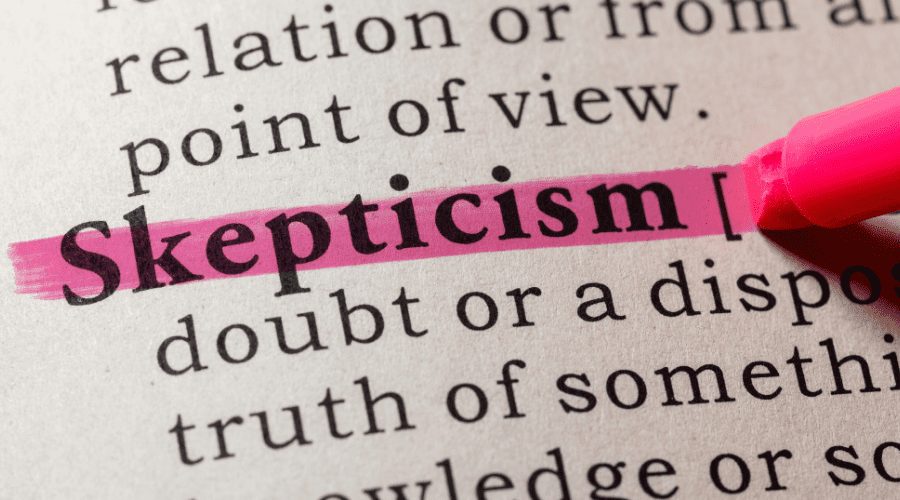Author: Richard Kelly | January 2022
The mission for the Open Minds Foundation is “to create awareness of coercion in its many forms and to educate people, especially young people, how to recognize and resist coercion”. This is definitely achievable. But only if people, as early as five years of age, can and will learn how to use and practice “critical thinking”.
What is critical thinking?
Critical thinking, sometimes called healthy skepticism, is a learned skill, using reflective, analytical thinking to make a reasonable, rational decision on what to believe or do. Even the most intelligent people have to learn it and practice it consciously. Once learned, critical thinking helps us to resist coercion and other emotional appeals that might otherwise undermine our reasoning.

What are the essential elements of critical thinking?
- Curiosity: We must be continuously learning something new, regardless of how knowledgeable we are. We should be open to new information, so that we can change our opinions. When we are curious, we enjoy looking at things from different perspectives, as it will improve our understanding and expand our knowledge. Curious people keep asking questions, like “What if the opposite is true?”, “What if I am wrong?”, “How sure can I be about this explanation?”, “How did you come to your conclusion?”, “What would it take for me to question my opinion? Am I being coerced?”
- Willingness to follow the evidence wherever it leads: This is the willingness to explore the facts we’re given and see what conclusions they might lead to. Instead of discarding evidence because it doesn’t fit in with our cherished assumptions, we need to be open to anything that might contradict our existing information and beliefs. The wider the variety of pieces of evidence that we can find, the better adapted and more nuanced our view of reality will become. This attitude leads us to a realistic outlook on life, to recognize coercion, and gives us a capacity to interpret and predict the wealth of facts and information we must deal with every day.
- Application of systematic analysis to problem solving: We must reflect on problems from different angles to work out the importance, goals, actions and outcomes in a rational and reasonable manner. Systematic analysis means we don’t make decisions based on assumptions, emotions, or wishful thinking. Instead, we evaluate possible outcomes to see if there might be a better approach. By reviewing our past actions, we will improve our future responses. Strategies include: looking at problems from other people’s points of view, applying logical reasoning skills, holding back when we feel a need to act on the basis of an emotion such as guilt, fear, shame, infatuation, or loyalty, and analyzing carefully how rational and fair other people’s arguments are. Critical thinking skills help us to avoid mistakes, react wisely to coercion, and to lead a better life.

Where can one go to learn more about critical thinking?
The Open Minds Foundation is building a library of critical thinking resources, as well as educational materials for us in schools. In addition, there are many good organizations promoting critical thinking besides our own. One of the best is the Reboot Foundation. The president, Helen Lee Bouygues, reports that her group, “is dedicated to supporting efforts by individuals and organizations to better integrate critical thinking into our daily lives. The Reboot Foundation also develops practical tools for parents, teacher, employers and others interested in cultivating a capacity for critical thinking.”
If one goes to their website, they will learn a lot about the state of art of critical thinking and that it “is a term used a lot by educators, politicians, journalists and the general public. But when it comes down to saying exactly what critical thinking actually is—and is not— there is vagueness and confusion.
“Although it’s complicated and multi-faceted, critical thinking can be defined. As cognitive scientist Daniel Willingham writes, the activities of critical thinking can be divided into three areas: reasoning, making judgments, and problem-solving. Critical thinking means becoming skilled in all three areas. It means, in brief, thinking well.
“So, can we think better? What does improved critical thinking look like? Because good thinking is so entwined in our daily lives, acquiring critical thinking skills is not as straightforward as becoming better at tennis. The exact skills depend on the stage of development as well as the domain in which the thinking skills are applied.” Reboot recommends the best time to start learning critical thinking is at five years of age, and Reboot provides a curriculum for doing that on their website.

